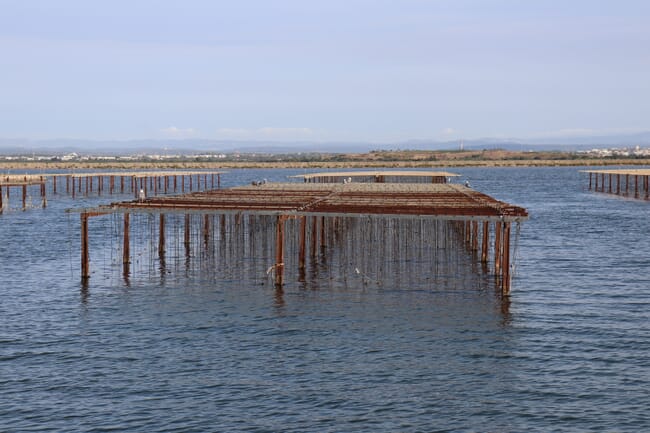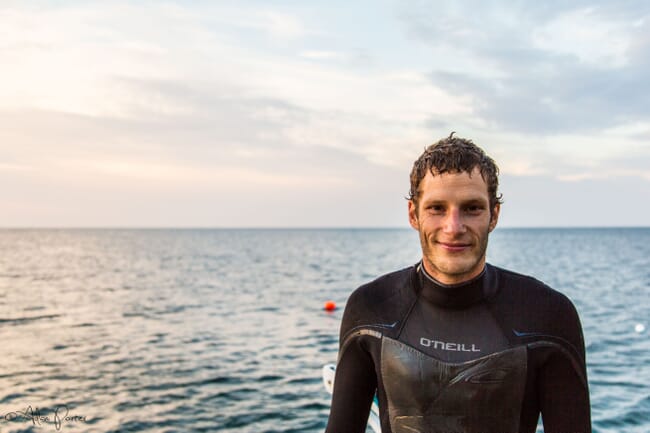Anyone who was in France in the summer of 2018 can attest to the searing temperatures that swept the country. From north to south, the nation experienced the second hottest summer since records began. Whilst children played in lakes and the sea to cool off, the shellfish producers of Étang de Thau could only watch as their oysters and mussels perished at the hands of malaïgue – a period of sustained high temperatures and little wind.

The ocean has always been a highly dynamic environment, with its ever-changing conditions presenting challenges to aquaculturalists. However, thanks to human-induced climate change and continuing carbon emissions, events like malaïgue may become more regular occurrences, bringing with them new disease-related challenges.
As every aquaculturalist knows, temperature plays a major role in the growth and health of aquatic species. Certainly, higher temperatures are typically related to higher energetic requirements and demand for food. In an interesting twist, finfish can find their hunger suppressed when held at the upper end of their thermal tolerance for too long – even though their metabolic demands continue to rise. Malnourished fish make for unhealthy fish, which makes for a more stressed and susceptible animal.
Temperature doesn’t just impact farmed animals. As work from Dr Tommy Leung, a parasitologist at the University of New England in Australia has shown, temperature also appears to have a relationship with the severity and duration of disease outbreaks. “If you are in a more temperate region, you might have an outbreak where half of your stock die whereas in the tropics you have over 90 percent dying,” Leung explained. To compound the problem, outbreaks in those warmer tropical and near-tropical regions also happen over a much shorter period. “This means you could have less time to respond to any potential outbreak.”

With increasing temperatures, it is possible that temperate regions could see shorter and more severe outbreaks as well, but the situation is, of course, complex. “You have all kinds of infectious agents, each with their own characteristics and parameters. For example, fungi generally tolerate much lower temperatures than bacteria and viruses, so the conditions that might be an optimal environment for fungi might be very different than for bacteria,” Leung explained. For those pathogens and parasites that normally go dormant in colder winter conditions, warming winters could see this dormancy period removed, potentially increasing parasite survival and reproductive output.
Temperature isn’t the only climate-change-related stressor aquaculturalists need to be on the lookout for. Lower pH and a reduction in oxygen can place stress on both shellfish and finfish, but perhaps more surprisingly in relation to disease are the effects that can be triggered by changes in salinity.
With the magnitude and frequency of storm events increasing across many parts of the globe, increased precipitation and runoff pulses can freshen seawater in more sheltered locations. “Changes in salinity are going to present challenges for an individual’s ability to maintain ion balance and homeostasis,” Dr Robert Ellis, a physiologist at the UK’s University of Exeter explained. Combined with the increased energetic costs of maintaining a steady physiological state, individuals may find themselves more susceptible to disease. Increased shrimp susceptibility to white spot syndrome, for example, has been linked to reduced salinity.

© Dr Adam Porter
Alongside salinity changes, storms and their associated runoff bring about other issues through pulses of pollution, nutrient and pathogen loads. Aside from increased risk of E coli and other diseases that can shut down industry, increased loads of nitrates, ammonium and, indeed, chlorophyll have also been linked to disease outbreaks such as amoebic gill disease.
Sadly, when it comes to ameliorating such impacts, there are no easy solutions. Rapid adoption of local, national and global strategies which seek to significantly reduce greenhouse gas emissions will reduce the magnitude of the impacts, but mitigation measures are still necessary.
Developments in genetics offer the potential to optimise selective breeding to produce more resilient animals. Ellis has been looking at mussels collected from around the world to identify the genetic markers of hardiness. By exposing them to a range of environmental conditions in a laboratory setting he has been seeing how they cope, and running some genetic analysis to identify the relevant genes that allow them to prosper, as well as the trade-offs that might be involved for producers, such as slower growth. “This is the first step to be able to identify traits for selective breeding,” he explained. Ellis hopes that eventually breeding programmes will be able to select for resiliency traits without compromising on other traits that are desirable for aquaculturalists.
For ultimate control over the farmed environment, arguably land-based facilities cannot be beaten, though they are not without their own set of challenges. Whilst land-based operations may increase in the future, Ellis encourages aquaculturalists to consider new locations that may prove to be more suitable over the longer term. “It’s going to be a combined approach where an aquaculturalist is going to have to understand their environment currently, and modellers need to work out what it is going to be like in 10, 20, 30 years.”
Regardless of whether facilities move or if individuals are selectively bred, early warning systems will be essential. This means increased monitoring of environmental conditions as well as for signs of stress, disease and parasites, so action can be taken as swiftly as possible. Leung also encourages aquaculturalists to monitor the evolution of pathogens and parasites in their farms. “Some studies done on salmon lice indicate that the lice in farms are evolving towards having a life history where they essentially live short, die young, but exploit the host a lot more,” he said. Because salmon are closely contained if a host salmon dies lice have little trouble in finding a new victim. With farmed animals potentially becoming more stressed, dormancy periods shorter and some pathogens more virulent, it may become more important than ever to work on reducing stocking densities and spacing farms further to minimise infection spread.
Ellis also encourages scientists and aquaculturalists to work more closely together. “If a scientist approaches you, don’t write it off as being a nuisance,” Ellis implored. “In academia, it’s very hard for us to know what challenges need addressing unless we speak to industry partners. A scientist might very well come in with their own ideas, but by sitting down and chatting [with aquaculturalists] we can address the problems that are having the greatest impact on a farm level,” Ellis explained. “It’s always going to be a balancing act between the science and the economics of business. The more informed we can be with the science the better choices farmers can make. Let’s give you the best toolkits and information we can, so you can make your business successful.”




